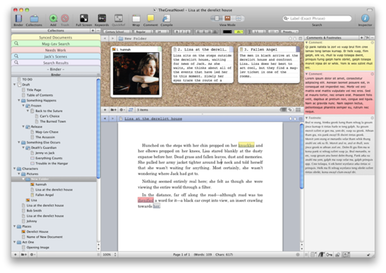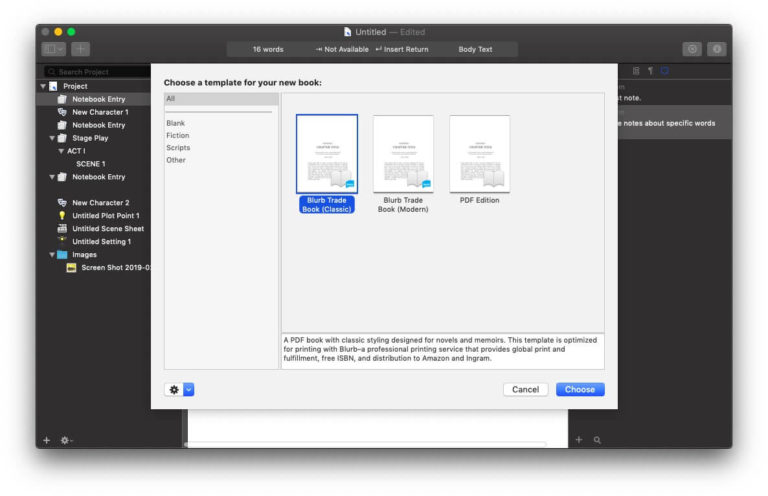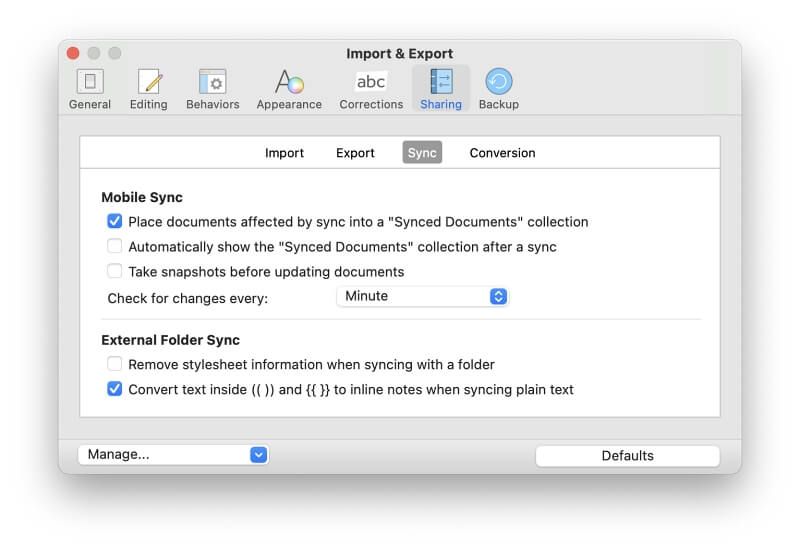

- #Scrivener for mac sync how to
- #Scrivener for mac sync archive
- #Scrivener for mac sync plus
- #Scrivener for mac sync windows
If you use a Mac, iOS, or iPadOS, you see these as "packages " they look just like single files, but within each project there are multiple items. Scrivener projects are made up of files and folders. (See Using File Access in this article.) About Scrivener Projects You can also transfer files directly from a computer to an iPad or iPhone, but the cloud is much easier. Or if you want to switch from working on a computer to an iPad or iPhone: the cloud also lets you access your files. The easiest way to always have access to your files is to store them in the cloud. Let's say you work on a desktop computer, and sometimes want to work on a laptop. The second, and most common, is to sync your projects from one device to another.

The first is that you may be collaborating with someone, and you want them to have access to your projects, and you need access to theirs. There are two main reasons to use the cloud for your Scrivener projects. But for this article, I'm going to discuss the main cloud storage services that are accessible to all.

You could also have a "personal cloud " there are companies that sell devices, such as network-attached storage devices (NAS) that you can access from anywhere. This is especially important when you're sharing folders with colleagues: they may be in a different country and need quick updates when you add, remove, or change files. Of course, it's not a single computer, or even a single data center: large cloud storage systems use networks of servers around the world to ensure that files are available anywhere. The cloud is just someone else's computer. Here's how you can use Scrivener with the cloud. You put files in a folder on your computer, and they sync to the cloud, and you can access the same files on another computer or device.īut when you're syncing Scrivener projects to cloud services, there are some rules to respect. With cloud services such as Dropbox, iCloud Drive, One Drive, and others, this syncing mostly just works.
#Scrivener for mac sync plus
O’Reilly members experience live online training, plus books, videos, and digital content from nearly 200 publishers.One of the best things about modern computing is the availability of "the cloud," allowing us to sync files from device to device without using floppy discs, thumb drives, or complex network connections to file servers. Get Scrivener For Dummies now with the O’Reilly learning platform. bak portion from the name to make it clear that it’s a. After it finishes, you have the original.
#Scrivener for mac sync archive
The Archive Utility runs, unzipping the file.
#Scrivener for mac sync windows
On a Windows PC, right-click the file and choose Extract. It also prevents you from losing that version of the backup.ģ. (Optional) Make a copy of the backup file and move it to the folder in which you keep your writing projects.Ĭopying the file ensures you’re not working on the file in the backup folder, which could cause problems with other backup files.

(The backup drive must be connected for this process to work.)Ģ. To locate the backup files easily, choose Scrivener⇒Preferences (Windows users, choose Tools⇒Options), and then select the Backup tab to view the Backup settings and click the Open Backup Folder button. bak.scriv if uncompressed, or ProjectName. Locate the file in Finder or Windows Explorer.Īutomatically backed up files are called ProjectName.
#Scrivener for mac sync how to
Having all these project backup files doesn’t do you any good if you don’t know how to use them when needed.įollow these steps to open a project from a backup file:ġ.


 0 kommentar(er)
0 kommentar(er)
